Stuffed squash isn’t a new idea. You’ve probably had at least one version of it, and if not, I’m sure you’ve seen photos of it online. Google “stuffed squash” and you get over 13 million hits! It’s incredibly versatile and can be adapted to suit pretty much any diet and palate (unless you hate squash – then you’re out of luck). It makes for a lovely and satisfying vegetarian entrée at the Thanksgiving table, so particularly at this time of year you see a lot of recipes that call for traditional Turkey Day flavors – cranberries, pecans, wild rice, etc. All great ingredients for sure, but I like to shake things up and I love Middle Eastern ingredients, so that’s what I’m highlighting in this rendition. The primary seasoning in this recipe is a blend called za’atar, commonly found across the Middle East. Though it always contains sesame seeds and dried herbs, the precise makeup varies according to country. In Jordan they add a lot of sumac and dried thyme, in Israel they include dried dill or oregano, in Lebanon they add orange zest, and in Syria they use cumin and pepper. I’m partial to the Jordanian version because I adore sumac, so that’s the variety I always keep in my pantry and it’s what I’m using in this recipe (though the Lebanese version would be suitable as well since we’re adding orange zest anyway).
Stuffed squash recipes often call for rice, quinoa, or barley, but I’ve lightened this one up with a grain-free alternative in the form of cauliflower “couscous.” Chickpeas serve as the protein, and they’re accompanied by sautéed rainbow chard leaves and stems, toasted pine nuts, pomegranate seeds, fresh herbs, sheep’s milk feta, and a blood orange-tahini sauce. The dish is a balanced study in contrasts – it’s warm and cool, sweet and salty, creamy and crunchy, earthy, spicy and acidic, and will keep you coming back for bite after delicious bite.
That’s a carnival squash in the center, and it’s named for its colorful speckled and striped appearance. It’s moist, nutty and sweet with a buttery flavor. Carnival squash is a hybrid of acorn and dumpling squash, so if you can’t find it feel free to substitute either of those. Kabocha will also work, though the flesh is a bit drier.
Once you cut the squash in half, scrape out the seeds and any fibrous, stringy stuff that clings to the flesh. Don’t throw out the seeds – they make a wonderful crunchy snack when seasoned and roasted (see recipe notes).
I wish blood oranges were available year-round. I love their spectacular jewel-toned flesh and sweet, floral flavor. If you can’t find blood oranges you can use Cara Cara or standard navel oranges instead, just pay attention to size/weight as they’re usually larger than blood oranges.
Tahini is one of my all-time favorite ingredients. It’s typically paired with lemon, but here I’ve substituted blood orange juice and the combination is something special. The color of the sauce takes on the barest hint of pink from the vibrant juice.
The variety of flavors and textures in this stuffing is wonderful. It’s basically a grain-free pilaf and would make a terrific accompaniment to roast chicken or pork if you have leftovers.
Easy enough for a weeknight meal, but certainly worthy of your holiday table. Now get cooking!
- For sauce
- 1 clove garlic, finely grated
- 2 ounces (¼ cup) tahini paste
- 15 ml (1 tablespoon) warm water
- Finely minced zest of 2 blood oranges (about 5 ½ ounces each), one teaspoon reserved for stuffing
- 90 ml (6 tablespoons) fresh blood orange juice
- Kosher salt
- Freshly ground pepper
- For squash
- 3 small winter squash (about 1 ½ lbs each), halved vertically & cleaned, seeds reserved*
- 15ml (1 tablespoon) olive oil
- Kosher salt and freshly ground pepper
- For stuffing
- 45 grams (⅓ cup) raw pine nuts**
- 1 lb cauliflower florets (from ½ medium 6-inch head, trimmed and cored)
- 30 ml (2 tablespoons) olive oil, coconut oil or ghee
- ½ cup diced red onion (about ½ of a small onion)
- Kosher salt
- 2 tablespoons salt-free za’atar***
- 1 ½ teaspoons aleppo chile flakes
- 1 tablespoon fresh thyme leaves, minced
- 2 teaspoons minced or grated garlic (2 large cloves)
- 1 bunch chard (1 - 1 ½ lbs) washed and dried, stems diced, leaves sliced into ribbons
- 14 ounces cooked chickpeas (from 4.5 ounces dried or one drained can)
- 120 ml (½ cup) vegetable stock
- 2 teaspoons ground sumac
- Freshly ground black pepper
- 1 teaspoon finely minced blood orange zest (reserved from sauce)
- Seeds of one small pomegranate (about 1 cup)
- 2 tablespoons chopped mint leaves
- 1 tablespoon chopped Italian parsley leaves
- 3 ounces (½ cup) crumbled sheep’s milk feta or dairy-free alternative
- Make the sauce: In a small bowl whisk together garlic, tahini, warm water, all but one teaspoon orange zest, and orange juice. Season to taste with salt and pepper. (If sauce is too thick for your liking, add more orange juice or water to reach desired consistency). Set aside.
- Roast the squash: Arrange two oven racks in upper middle and lower middle positions, and preheat oven to 400°F. Rub the exposed flesh of the squash with olive oil and season with salt and pepper. Place squash cut-side down on an oiled baking sheet and roast on upper middle rack for 25-30 minutes or until lightly browned and tender when pierced with a fork.
- While squash is roasting, make the stuffing: Spread the nuts on a sheet pan and toast them in the oven on the lower-middle rack for about 5 minutes or until lightly golden, tossing once. (Keep a close eye on them because they burn easily.) Set nuts aside to cool.
- Pulse the cauliflower florets in a food processor or blender until they break down into couscous-sized bits (do not puree). You should end up with about 4 cups of “couscous.” Set aside.
- In a dutch oven or large high-sided sauté pan, heat 1 tablespoon oil or ghee over medium heat. Add diced onion and pinch of salt and sauté until softened, 4-5 minutes. Add za’atar, aleppo flakes, thyme, garlic, and chard stems (not leaves), and sauté for 1-2 minutes, tossing/stirring occasionally, until fragrant. Add chickpeas, vegetable stock, 1 teaspoon salt, and cauliflower. Continue to cook, stirring occasionally, 5 minutes or until stock is absorbed and cauliflower couscous is tender. Add chard leaves and sumac, toss to combine, and cook until chard leaves are wilted, 1-2 minutes. Season to taste with salt and pepper.
- Remove from heat and stir in orange zest, pomegranate seeds, mint, feta and pine nuts.
- Serve: Divide stuffing among squash halves and drizzle with orange tahini sauce. Serve immediately, passing additional sauce on the side.
**When purchasing pine nuts, read labels to learn their country of origin and steer clear of nuts from China, Korea or Russia. There’s an unpleasant condition called “pine mouth” or “pine nut syndrome” that can occur from ingesting a certain species of Chinese pine nuts (and they’re often processed in Russia and Korea). While not at all dangerous, pine mouth makes everything you eat taste bitter and metallic for 1-2 weeks. Not fun! So make an effort to seek out European or Mediterranean pine nuts.
***Some companies add a lot of salt to their za’atar, making it difficult to balance the seasoning in a recipe without over-salting. I either mix my own za’atar or buy salt-free blends, and I recommend that you do the same.
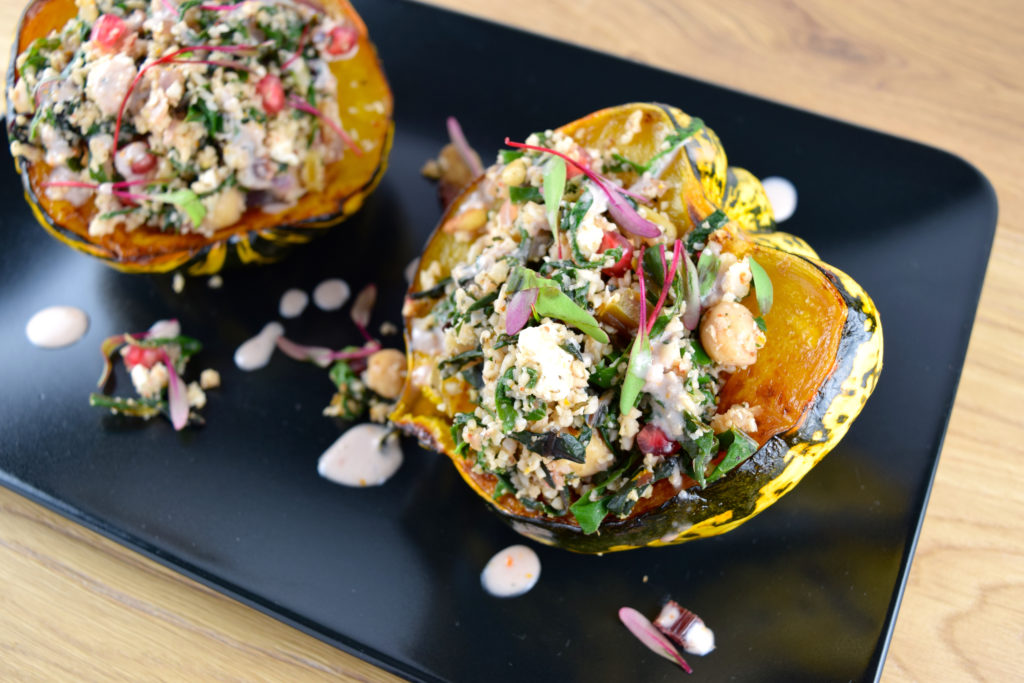
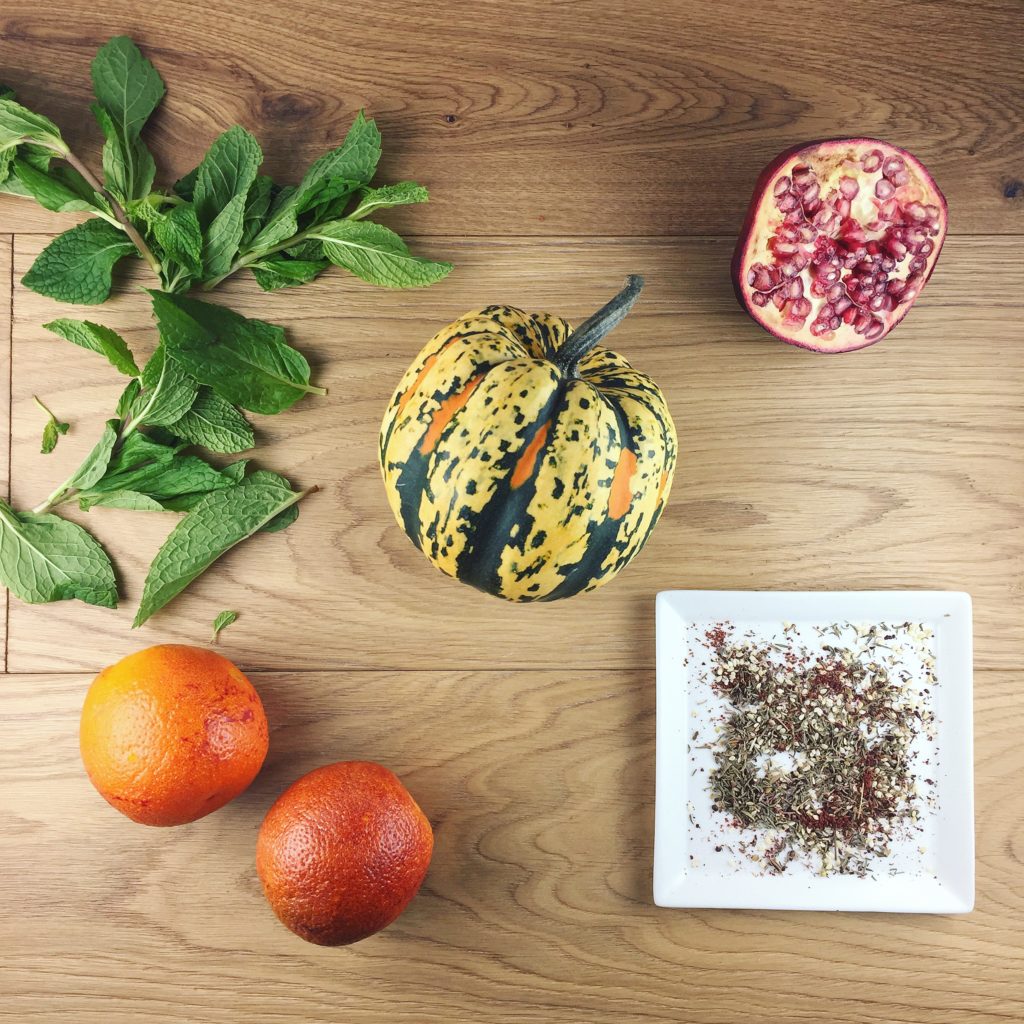
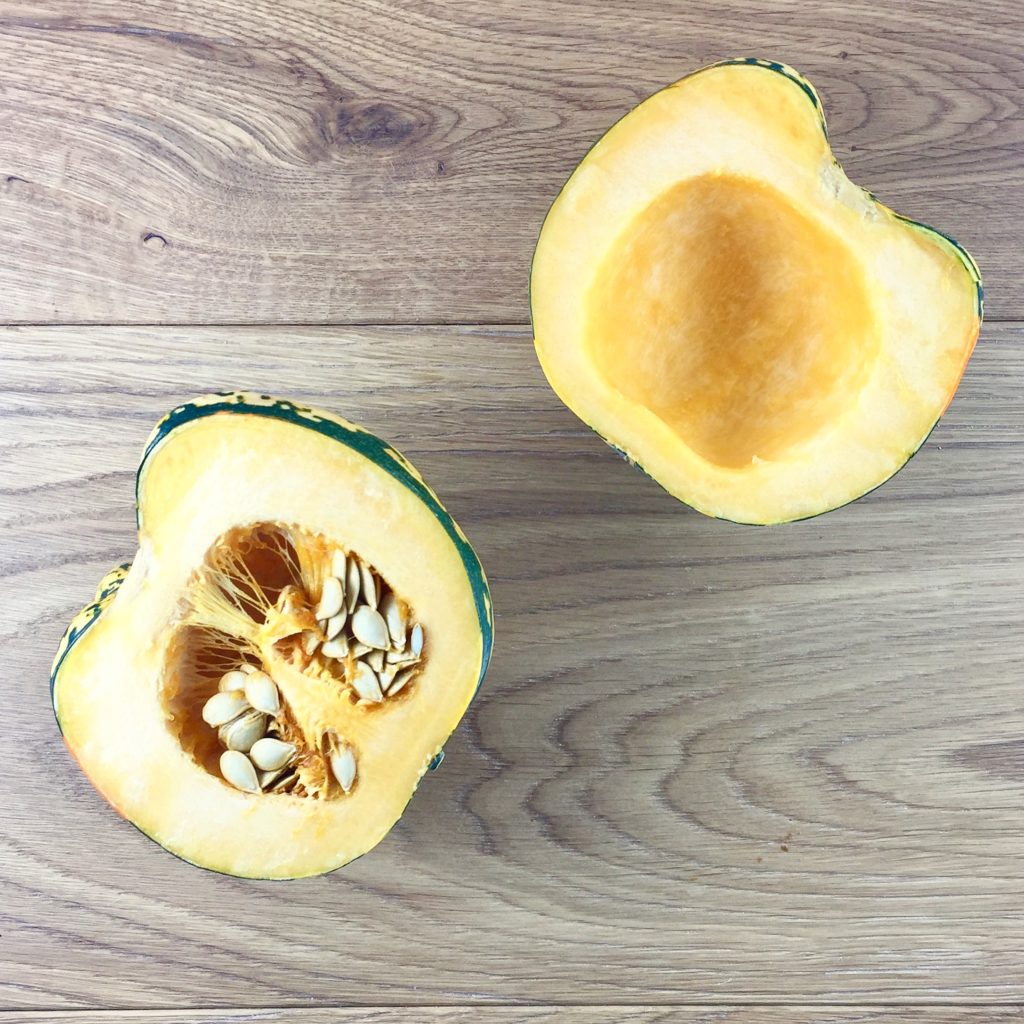
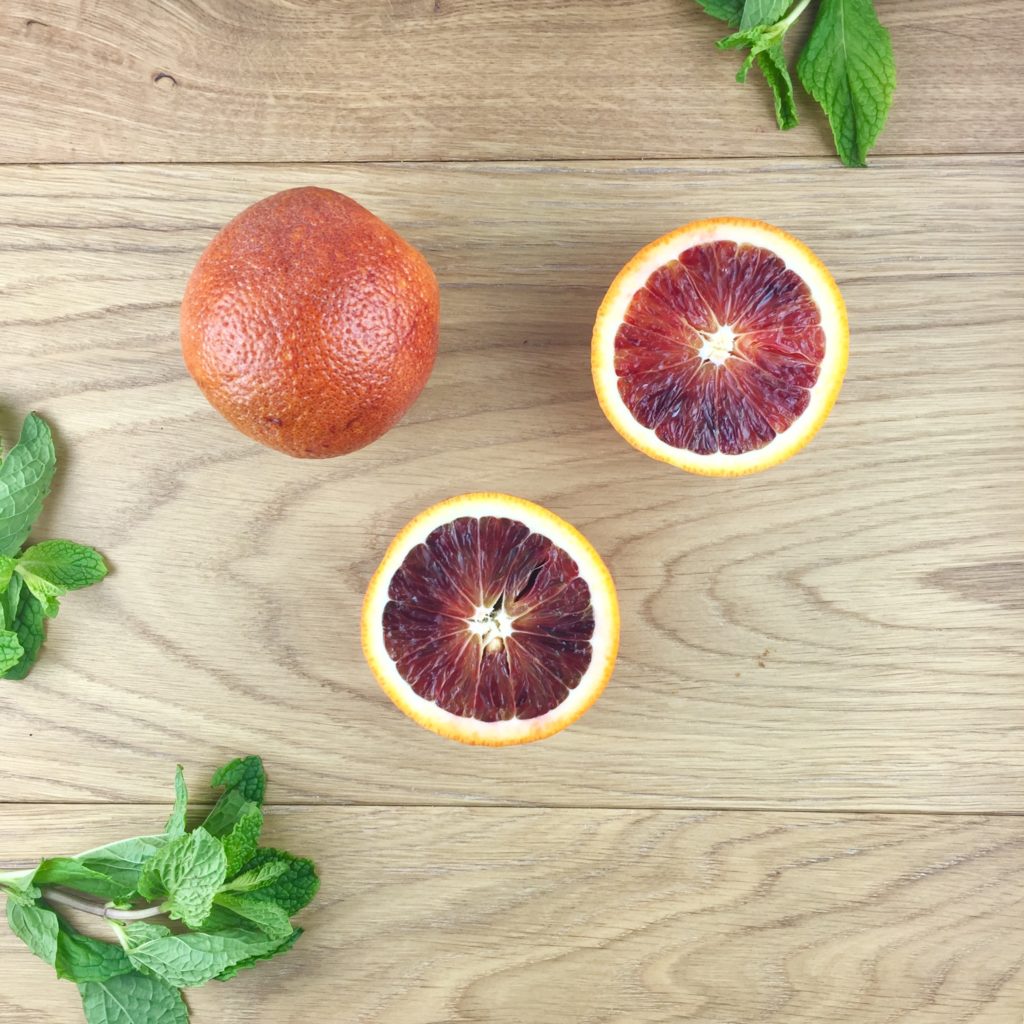
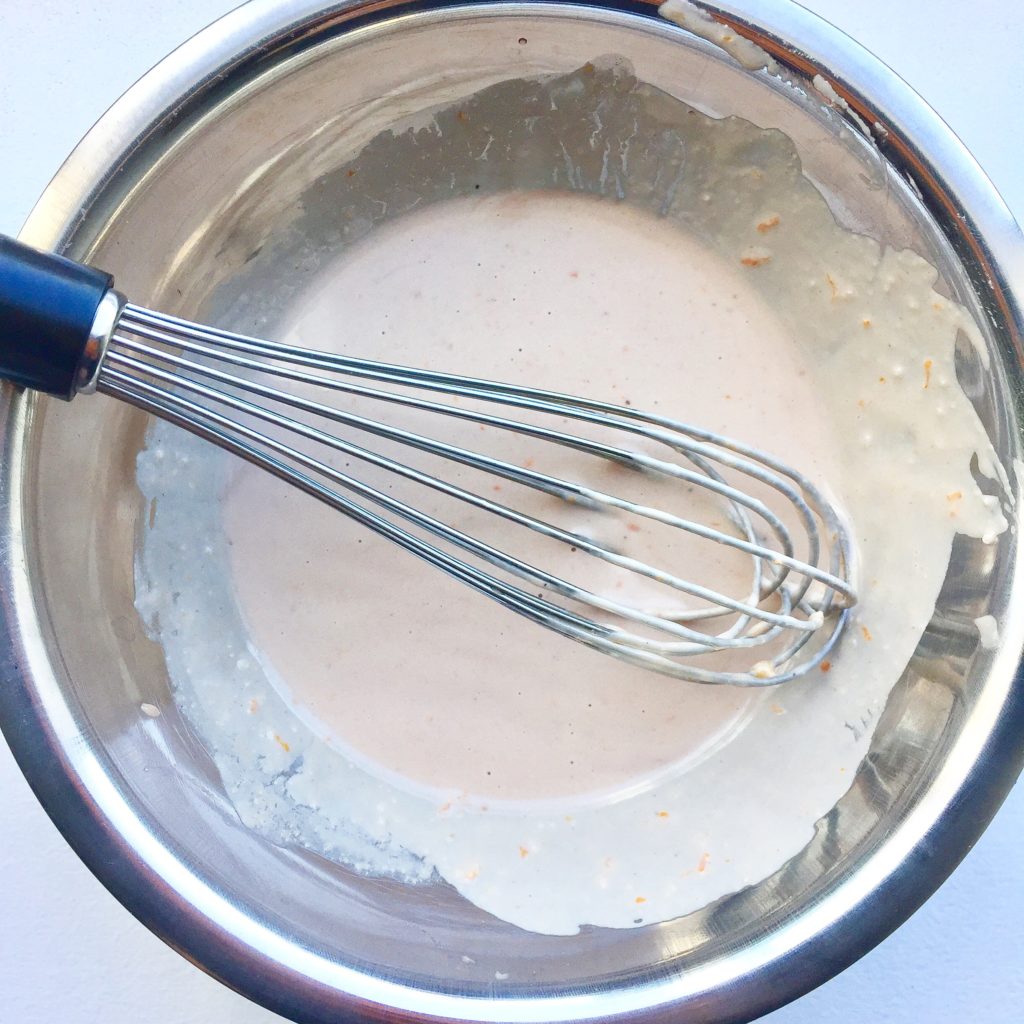
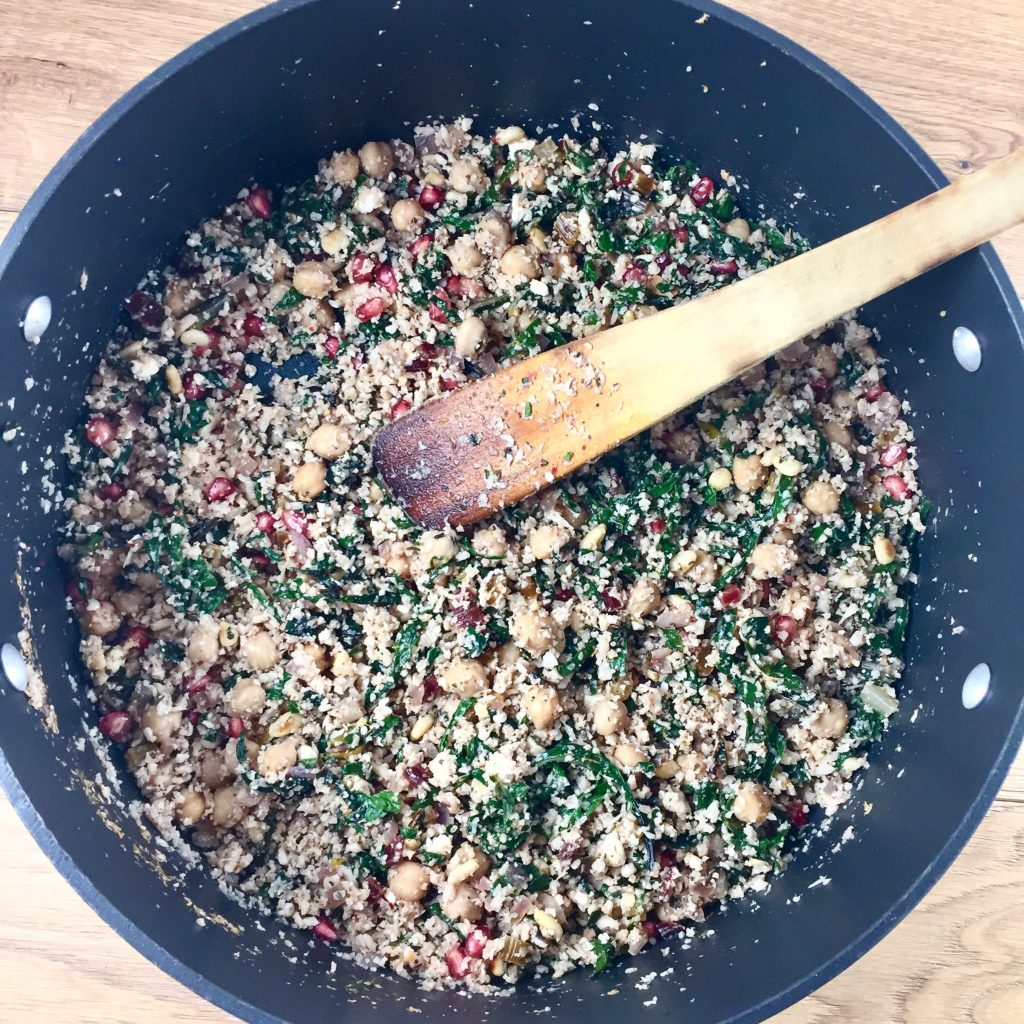
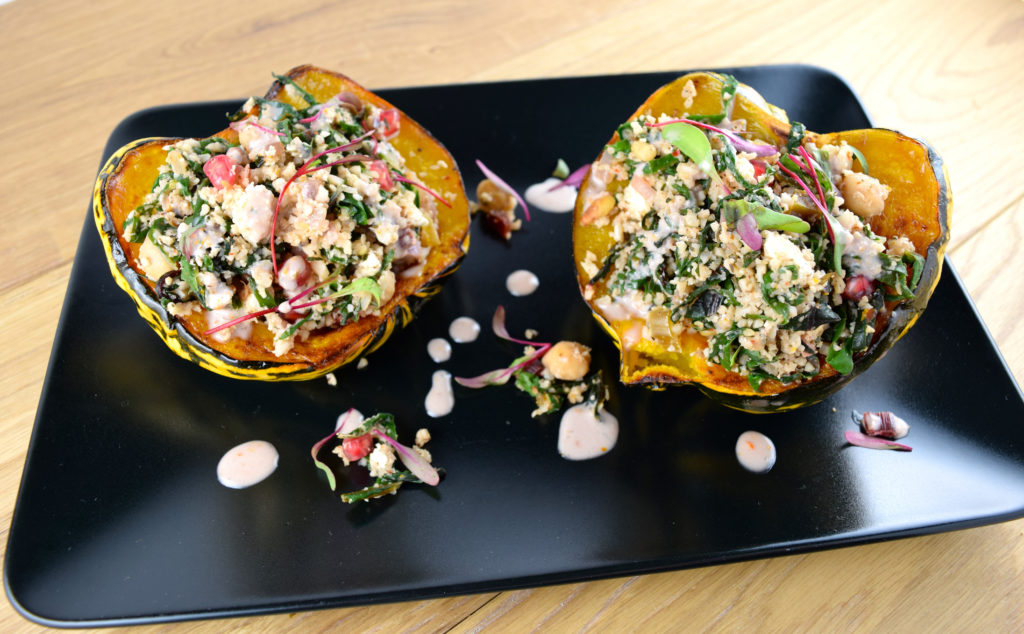
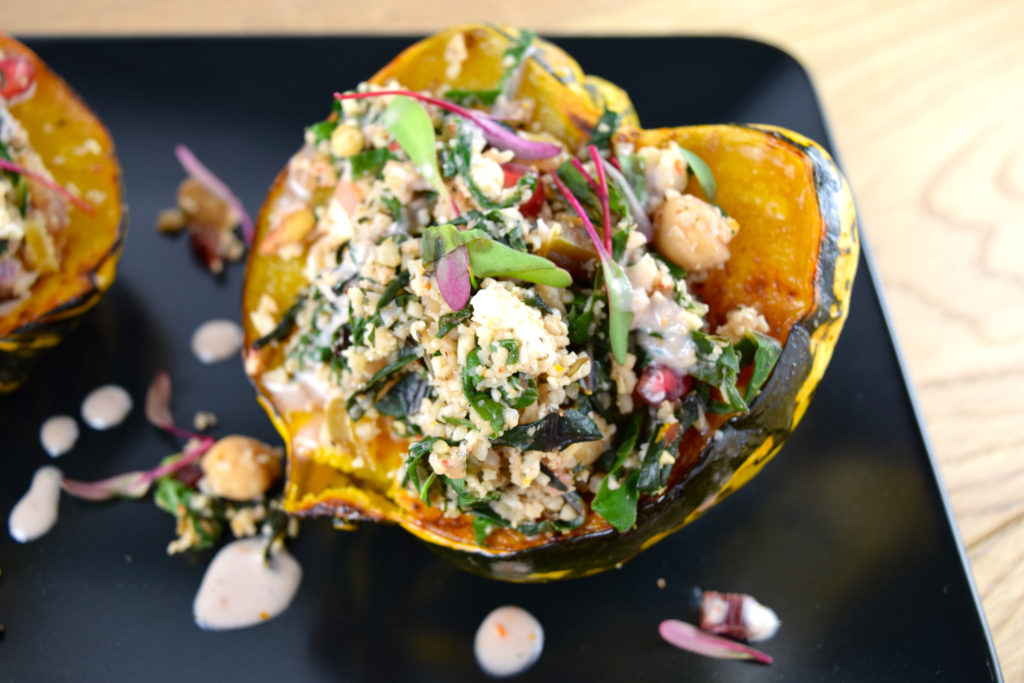


Leave a Reply